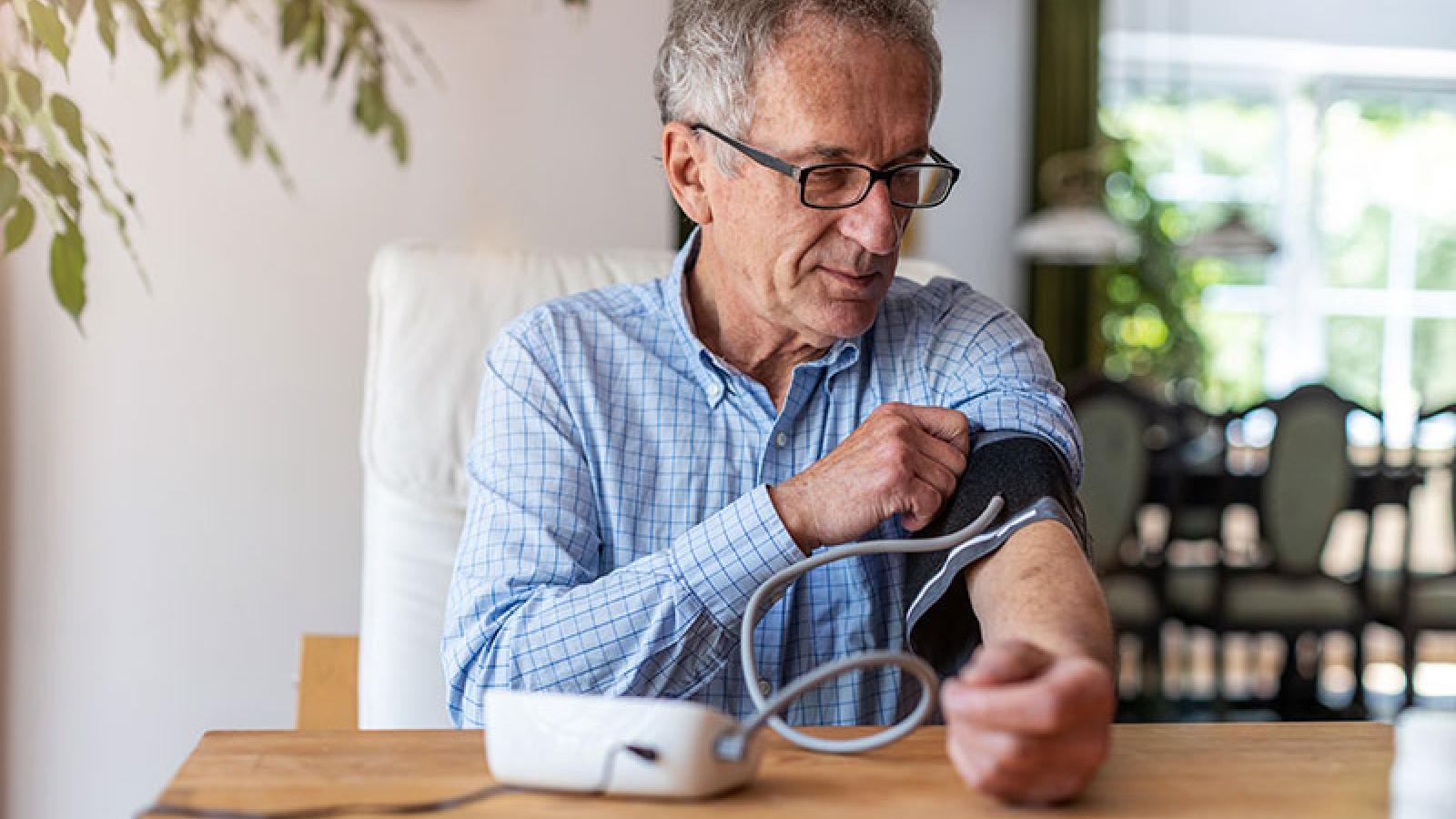How to Properly Check Your Blood Pressure

If your doctor suggests that you monitor your blood pressure at home, here's how to do it.
Keeping your blood pressure under control can lower your risk of heart attack, stroke and kidney disease. If your blood pressure is high or is even slightly above normal, your doctor may recommend that you check your blood pressure at home. This may provide a more accurate reading than a single reading taken at a doctor's office, especially since some people's blood pressure increases due to being nervous when they go to the doctor.
Understanding Blood Pressure Readings
Before you start checking your blood pressure, it's important to understand what the numbers you see on the monitor mean. The first number (the top number) is the systolic measurement, while the second (the bottom number) is the diastolic measurement. The systolic number refers to the force of your blood as it flows through your arteries. The diastolic number is a measurement of the pressure in your arteries when the heart rests between beats.
Here's what the numbers mean:
- Normal blood pressure: less than 120 systolic and less than 80 diastolic
- Elevated blood pressure: 120 - 129 systolic and less than 80 diastolic
- Stage 1 high blood pressure: 130 - 139 systolic or 80 - 89 diastolic
- Stage 2 high blood pressure: 140 or higher systolic or 90 or higher diastolic
How to Take Your Blood Pressure at Home
Fortunately, home blood pressure monitors make it easy to take your blood pressure. There are many types of blood pressure monitors available for this purpose. For the most accurate results, the American Heart Association® recommends using a cuff-style monitor rather than a wrist or finger monitor.
Follow these steps when you take your blood pressure with a cuff-style monitor:
- Place the cuff on your upper arm above the elbow (don't place cuff over clothing).
- Sit upright and place your arm on a table in front of you. Keep your arm at chest height while you take your blood pressure.
- Turn on the machine. The cuff will automatically inflate and deflate as it measures your blood pressure. In just a few minutes, your blood pressure reading will be displayed on the monitor.
- Take two or three readings, each a few minutes apart.
- Note the measurements in a notebook or journal if your monitor doesn't store readings so you can keep track of the readings and can show them to your doctor at your next visit.
These tips will help ensure you get the most accurate readings:
- Avoid exercise for at least a half hour before you take a blood pressure measurement.
- Don't drink coffee, tea or soft drinks that contain caffeine for 30 minutes prior to checking your blood pressure.
- Check your blood pressure around the same time every day.
- Keep your arm at about the same level as your heart.
- Choose a comfortable chair that offers back support. Keep your feet flat on the floor.
- Don't smoke for an hour or two before taking your blood pressure.
Don't panic if your blood pressure is a little high on occasion. It's perfectly normal for blood pressure to vary from day to day and even hour to hour. One elevated reading won't necessarily mean your blood pressure is high. But if the readings are consistently elevated, you should let your doctor know. He or she may offer suggestions to help you lower your pressure naturally, such as reducing salt intake, following a healthy diet, exercising more often and losing weight. If your blood pressure remains high despite these lifestyle changes, it may be necessary to take prescription medication to lower it so you avoid serious health issues that can be caused by high blood pressure.
Copyright 2021-2022 © Baldwin Publishing, Inc. All rights reserved. Health eCooking® is a registered trademark of Baldwin Publishing, Inc. Cook eKitchen™ is a designated trademark of Baldwin Publishing, Inc. Any duplication or distribution of the information contained herein without the express approval of Baldwin Publishing, Inc. is strictly prohibited.
Date Last Reviewed: July 27, 2021
Editorial Review: Andrea Cohen, Editorial Director, Baldwin Publishing, Inc. Contact Editor
Medical Review: Perry Pitkow, MD
Learn more about Baldwin Publishing Inc. editorial policy, privacy policy, ADA compliance and sponsorship policy.
No information provided by Baldwin Publishing, Inc. in any article is a substitute for medical advice or treatment for any medical condition. Baldwin Publishing, Inc. strongly suggests that you use this information in consultation with your doctor or other health professional. Use or viewing of any Baldwin Publishing, Inc. article signifies your understanding and agreement to the disclaimer and acceptance of these terms of use.

